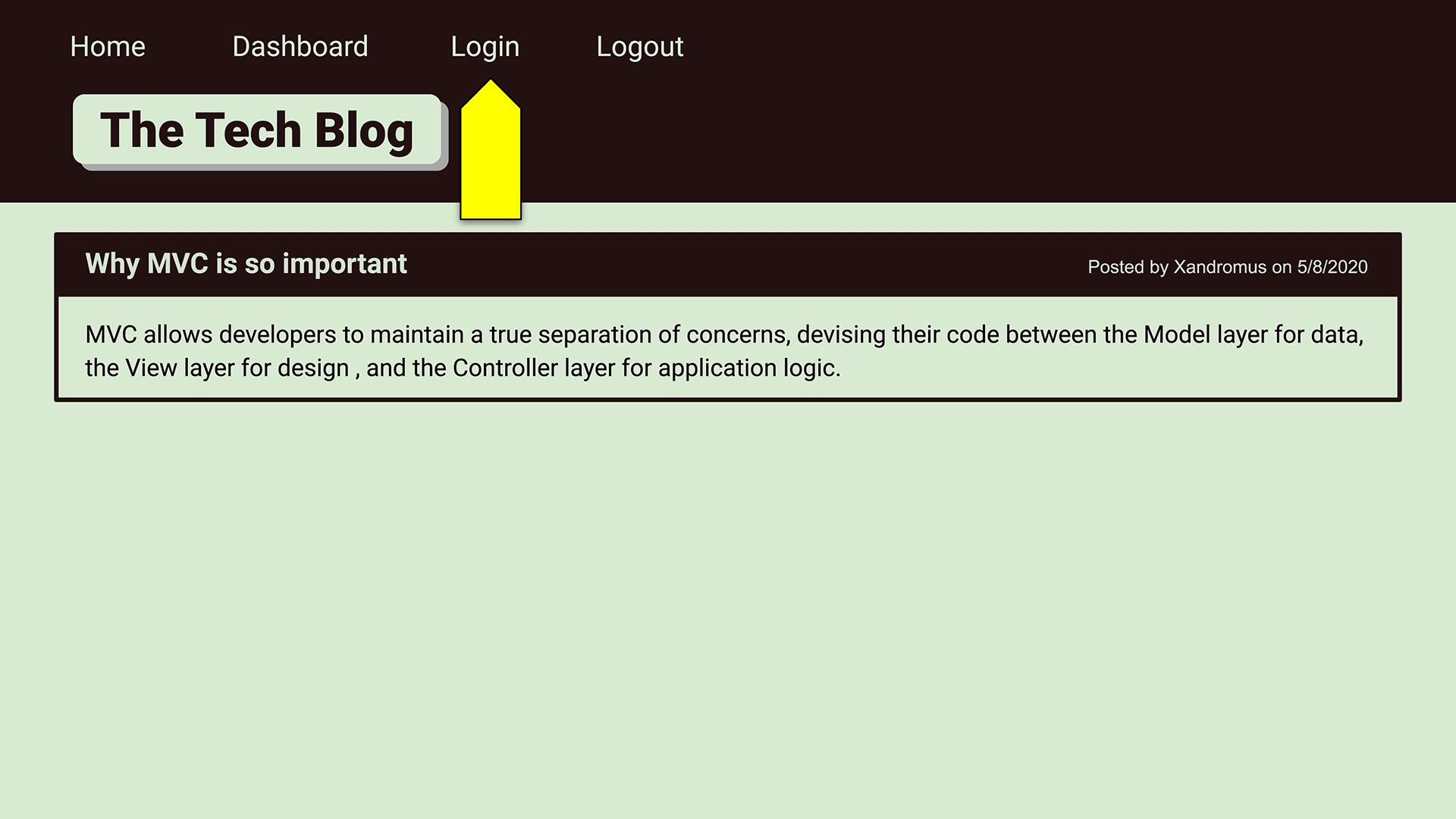Writing about tech can be just as important as making it. Developers spend plenty of time creating new applications and debugging existing codebases, but most developers also spend at least some of their time reading and writing about technical concepts, recent advancements, and new technologies. A simple Google search for any concept covered in this course returns thousands of think pieces and tutorials from developers of all skill levels!
Your task this week is to build a CMS-style blog site similar to a Wordpress site, where developers can publish their blog posts and comment on other developers’ posts as well. You’ll build this site completely from scratch and deploy it to Heroku. Your app will follow the MVC paradigm in its architectural structure, using Handlebars.js as the templating language, Sequelize as the ORM, and the express-session npm package for authentication.
AS A developer who writes about tech
I WANT a CMS-style blog site
SO THAT I can publish articles, blog posts, and my thoughts and opinionsGIVEN a CMS-style blog site
WHEN I visit the site for the first time
THEN I am presented with the homepage, which includes existing blog posts if any have been posted; navigation links for the homepage and the dashboard; and the option to log in
WHEN I click on the homepage option
THEN I am taken to the homepage
WHEN I click on any other links in the navigation
THEN I am prompted to either sign up or sign in
WHEN I choose to sign up
THEN I am prompted to create a username and password
WHEN I click on the sign-up button
THEN my user credentials are saved and I am logged into the site
WHEN I revisit the site at a later time and choose to sign in
THEN I am prompted to enter my username and password
WHEN I am signed in to the site
THEN I see navigation links for the homepage, the dashboard, and the option to log out
WHEN I click on the homepage option in the navigation
THEN I am taken to the homepage and presented with existing blog posts that include the post title and the date created
WHEN I click on an existing blog post
THEN I am presented with the post title, contents, post creator’s username, and date created for that post and have the option to leave a comment
WHEN I enter a comment and click on the submit button while signed in
THEN the comment is saved and the post is updated to display the comment, the comment creator’s username, and the date created
WHEN I click on the dashboard option in the navigation
THEN I am taken to the dashboard and presented with any blog posts I have already created and the option to add a new blog post
WHEN I click on the button to add a new blog post
THEN I am prompted to enter both a title and contents for my blog post
WHEN I click on the button to create a new blog post
THEN the title and contents of my post are saved and I am taken back to an updated dashboard with my new blog post
WHEN I click on one of my existing posts in the dashboard
THEN I am able to delete or update my post and taken back to an updated dashboard
WHEN I click on the logout option in the navigation
THEN I am signed out of the site
WHEN I am idle on the page for more than a set time
THEN I am automatically signed out of the site The following animation demonstrates the application functionality:
Your application’s folder structure must follow the Model-View-Controller paradigm. You’ll need to use the express-handlebars package to implement Handlebars.js for your Views, use the MySQL2 and Sequelize packages to connect to a MySQL database for your Models, and create an Express.js API for your Controllers.
You’ll also need the dotenv package to use environment variables, the bcrypt package to hash passwords, and the express-session and connect-session-sequelize packages to add authentication.
This homework is graded based on the following criteria:
-
Satisfies all of the preceding acceptance criteria plus the following:
-
Application’s folder structure follows the Model-View-Controller paradigm.
-
Uses the express-handlebars package to implement Handlebars.js for your Views.
-
Application must be deployed to Heroku.
-
-
Application deployed at live URL.
-
Application loads with no errors.
-
Application GitHub URL submitted.
-
GitHub repository contains application code.
-
User experience is intuitive and easy to navigate.
-
User interface style is clean and polished.
-
Application resembles the mock-up functionality provided in the homework instructions.
-
Repository has a unique name.
-
Repository follows best practices for file structure and naming conventions.
-
Repository follows best practices for class/id naming conventions, indentation, quality comments, etc.
-
Repository contains multiple descriptive commit messages.
-
Repository contains quality readme file with description, screenshot, and link to deployed application.
You are required to submit BOTH of the following for review:
-
The URL of the functional, deployed application.https://rocky-bayou-43593.herokuapp.com/login
-
The URL of the GitHub repository, with a unique name and a readme describing the project. https://github.com/gamezsal/14TechBlog
© 2020 Trilogy Education Services, LLC, a 2U, Inc. brand. Confidential and Proprietary. All Rights Reserved.
